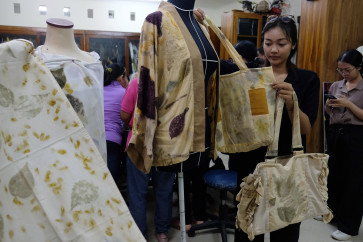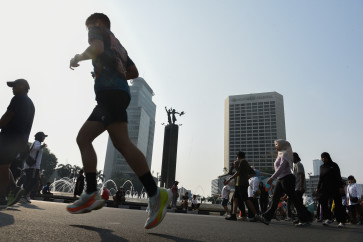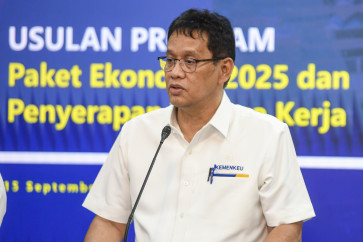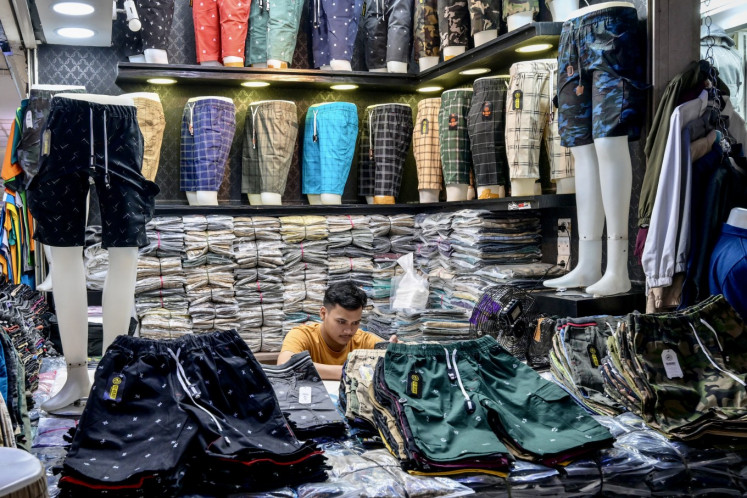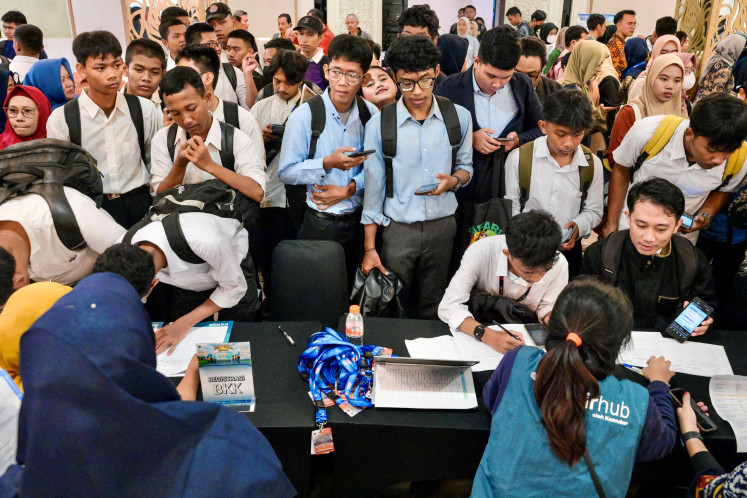Popular Reads
Top Results
Can't find what you're looking for?
View all search resultsPopular Reads
Top Results
Can't find what you're looking for?
View all search resultsBuilding more flyovers is a mistake
I would like to respond to Lynna Van Der Zee-Oehmke’s article “Jakarta’s New Flyover” in The Jakarta Post (June 16, 2010)
Change text size
Gift Premium Articles
to Anyone
I
would like to respond to Lynna Van Der Zee-Oehmke’s article “Jakarta’s New Flyover” in The Jakarta Post (June 16, 2010). But before so, I would like to thank Lynna for responding to my comment (the Post, June 14, 2010) regarding the plan of Jakarta administration to construct three flyovers with total project value of Rp 2.1 billion (US$ 232,000).
I have voiced my opinions in other media, presenting my arguments against the plan to build flyovers on Jl. Pangeran Antasari-Casablanca; Kampung Melayu-Tanah Abang; and Kapten Tendean-Ciledug. However, allow me to explain again my argument, referring to what has been put into practice in Bangkok, as Lynna suggested.
First, I maintain my position that flyovers, underpasses, downtown toll roads, or anything as such, will never solve the problem of traffic congestion.
The idea that building new roads will improve the “road ratio” (the number of vehicles compared to the total length of roads available) and thus reduce traffic congestion is a false assumption.
This is because if the government builds new roads or widens existing roads, we see an increase in the number of personal vehicles on them.
There are currently at least 40 flyovers in Jakarta, built either by the Public Works Agency or the local government, and more than 10 underpasses.
Unfortunately, none has been able to reduce traffic congestion in the city. Instead, the congestion moves somewhere else, because the philosophy of constructing new roads is in fact to facilitate private vehicles.
When new a flyover or underpass opens, it may seem like traffic has been reduced for a short period.
This phase sometimes lasts for the first two years, and traffic congestion is noticeably reduced compared to how it was prior to construction of the new road.
However, after that the symptoms of traffic congestion return, and in the fifth year the congestion is back to how it was before the new road was there.
Second, flyovers and underpasses are expensive. And yet, such roads are built only to facilitate personal motorized vehicles because the characteristics of flyovers and underpasses are not compatible with the characteristics of public transportation — which requires stops available for passengers to board and alight vehicles in certain areas. It is highly impractical and dangerous to load and unload passengers on flyovers and underpasses.
The construction of long flyovers goes against the national and local government program presented by Jakarta Governor Fauzi Bowo during City Forum in Copenhagen, Denmark (2009), which set out a plan to reduce carbon emissions by up to 30 percent by 2020.
This promise was to be fulfilled by reducing the consumption of fossil fuels, including gasoline (oil) for motorized vehicles.
Therefore, infrastructure that needs to be built should support efforts to reduce the use of personal motorized vehicles, such as the development of a mass public transportation system, and non-motorized vehicles facilities such bike lanes.
Third, the Jakarta local government does not need to promote an increased use of personal motorized vehicles.
Instead, it needs to construct mass public transportation and bike lanes, so that more Jakarta residents leave their motorized vehicles at home and then convert to public transportation or bikes.
If transportation facilities are not available yet, it follows the community will be heavily dependent on personal vehicles and consequently, traffic congestion will not improve, even if 100 more flyovers or underpasses are built.
As somebody who is involved in the issue of transportation I have visited other cities including Bangkok, several times. My last visit to Bangkok was in November 2008.
I not only observed the city physically, but also studied transportation issues there. I saw that Bangkok has many flyovers, and yet they still experience traffic jams.
This is clear evidence we do not need to follow their example. If we visited Bangkok during their time of political unrest, we would not have witnessed traffic jams because many businesses were closed and tourists were not around, so the streets were relatively quiet.
However, if we visit Bangkok during normal conditions, it is not very different from Jakarta.
“Building flyovers in Bangkok and in Mexico City and in other places around the world has not solved traffic problems, only spurred more traffic,” says Michael Replogle of ITDP (Institute for Transportation and Development Policy).
If Bangkok’s traffic condition is relatively better than it was in the 1970s, it is because of the abundance of varied modes of public transportation.
The city now has more big buses, subways, skytrains and even water transportation facilities in certain areas. These facilities are also integrated quite well, making them more convenient and thus people are more likely want to use public transportation facilities.
In some areas, the public transportation stations, particularly for the subway and skytrain, are connected with public venues such as malls and office buildings.
Park and Ride facilities are also provided in various places, so owners of cars can park close to the subway or skytrain station and then continue their journey using public transport.
All these facilities have reduced traffic congestion. Unfortunately, similar facilities are yet to be found in Jakarta.
It is therefore a huge mistake to conclude that the improvement of traffic congestion in Bangkok is largely a result of the increase in the number of flyovers and toll roads available.
Such a conclusion is misleading, and if it inspires the Jakarta administration to build more roads, it may create a disaster (in ecological, social and cultural terms, as well as for the health of the community), by promoting more rapid motorization of the city.
If we hope to see Fauzi Bowo steering clear of NATO (No Action, Talk Only), we should encourage him to be consistent in carrying out the Macro Transportation Pattern concept (Pola Transportasi Makro/PTM) that he designed during his vice governorship.
PTM included a plan to construct and develop mass public transportation, including 15 busway corridors plus their feeder system, as well as an MRT network.
The claim that the busway infringes on the rights of personal vehicles with its dedicated bus lanes is not completely accurate either.
There is no law that specifically regulates that roads are there for cars only. Public transportation services and bicycles have equal rights on roads.
Conversely, it is a huge mistake to assume that roads in Jakarta should be dominated by personal vehicles. The use of these roads should be divided among personal vehicles, public transportation services, bicycles and pedestrian lanes.
It is also true that cumulatively the road tax from motorized vehicles in Jakarta reaches an average total of Rp 5 billion every year.
However, one must remember that the gasoline subsidy provided by the government to the users of personal vehicles is far larger than what government receives from personal vehicle tax.
The same also applies to the loss experienced from the traffic congestion because of the excessive number of personal vehicles, which is eight times higher than the annual tax gained from personal
vehicles.
It is therefore a really huge mistake if Jakarta administration only facilitates personal motorized vehicles by constructing new flyovers and ignores the need for mass public transportation and bike lanes.
It is also wrong to regard the use of personal vehicles as the most appropriate transportation solution for Jakarta.
No other cities in the world have solved the problems of traffic congestion by prioritizing personal vehicles.
Rather, they constructed mass public transportation systems that are safe, comfortable, punctual and affordable. Seoul (South Korea) and Boston (USA) even demolished downtown flyovers and converted areas into open green spaces. Jakarta needs to learn from them.
The author is the writer of Transportasi Jakarta Menjemput Maut (2010).


